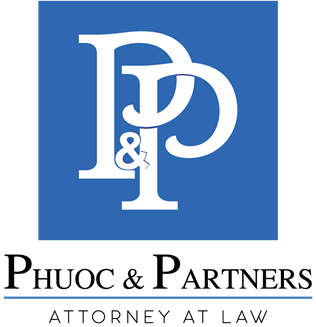Benefits and Strategies of Intellectual Property Protection for Enterprises
In the current context of an increasingly developed and fiercely competitive economy, the concept of “brand” has become a decisive factor in the success of a business. Therefore, the issue of Intellectual Property Protection for Enterprises is attracting special attention from a wide range of enterprises. In practice, disputes related to intellectual property rights among enterprises are on the rise. Some notable examples include the dispute over the “Mì Hảo Hảo” and “Mì Hảo Hạng” trademarks in 2015, as well as the case of Saigon Beer-Alcohol-Beverage Joint Stock Corporation (SABECO) accusing Saigon Vietnam Beer Corporation of “imitating” the label on Saigon beer cans.
Intellectual property holds significant importance for enterprises and is considered a source of value that is not directly tangible. These are products created through human creativity, manifested through intellectual activities. Despite lacking a physical form, their value is substantial due to the potential for generating high profits. In order to help the enterprises recognise the importance of protecting intellectual assets early on and minimise potential hidden risks, this article by Phuoc and Partners provides readers with information on the benefits and specific strategies for protecting intellectual property for businesses.
What is an enterprise’s intellectual property?
Intellectual property rights are the rights of organisations and individuals concerning intellectual assets, encompassing copyright and related rights, industrial property rights, and rights related to plant varieties[1]. These are legal entitlements for businesses over their creative products, which may include inventions, artistic works, brand names, trademarks, business ideas, trade secrets, technological secrets, and other intellectual assets owned by the business. These are intangible but crucial assets for an enterprise and play a decisive role in establishing and safeguarding the business from unhealthy competition in the market.
The types of intellectual property ownership for enterprises can include (1) copyrights for products resulting from the creative intellectual efforts of the enterprise’s personnel, (2) trademarks, comprising names, symbols, signs, or distinctive designs used to identify the products or services of the enterprise, (3) inventions, trade secrets, business secrets, and business patents, ensuring exclusive rights in using, selling, and manufacturing products or processes, and (4) databases that a business has invested time, effort, and resources to build.

Benefits of protecting the intellectual property of the enterprise
Protecting and efficiently managing intellectual property assets not only helps the enterprise enhance their competitive position in the market but also ensures sustainable development in an era where information is easily susceptible to theft or imitation. Below are the details of the benefits in terms of (i) legal aspects and (ii) development of production and business resulting from protecting the intellectual property of the business.
- From the legal perspective:
The legal system in Vietnam regarding intellectual property grants ownership rights to individuals and organisations owning intellectual property assets with exclusive rights that only the owners are entitled to enjoy. For example, owners of inventions, industrial designs, layout designs, and trademarks have the right to submit applications for protection and have them officially recorded in a certificate of protection. In doing so, owners have full property rights over their industrial property, such as the right to use, permit, or prohibit others from using, and make decisions regarding their industrial property[2]. Protecting one’s intellectual property assets helps the enterprises maximise their exclusive legal rights and benefits over competitors.
Protecting one’s intellectual property rights is a tool to ensure the safety of the enterprise in case of disputes and a powerful weapon for businesses when disputes are brought to resolution in competent courts. Except for copyright, which is a right recognised by Vietnamese law without the need for registration, all other intellectual property rights are only granted to owners who register their ownership with the authorised state agency[3]. When legal disputes arise regarding ownership of intellectual property, enterprises at that point have solid evidence to defend their interests. Furthermore, this serves as crucial supporting documentation for the enterprise to initiate lawsuits in the competent court or seek compensation for damages against other enterprises showing signs of infringement on these ownership rights.
- For the production and business development perspective:
Intellectual property ownership is not just a protective tool but also a source of creating value and profits for enterprises. The intellectual property assets of enterprises are the results achieved through the intellectual capabilities of individuals or multiple contributors. They can be the outcome of extensive research and production processes, playing a significant role in the operations of the enterprises. This contributes to increased work efficiency and higher profits for the enterprise. Businesses utilise their intellectual property rights to prevent unhealthy and unfair competitive practices, such as copying or counterfeiting, from competitors in the same industry. This helps maximise the deterrence of such behaviours and maintain the uniqueness and brand value of the enterprises in the market.
The exclusive rights of intellectual property owners create opportunities for enterprises to increase profitability, ranging from licensing the use of their intellectual property to engaging in strategic collaborations with potential partners. The intellectual property rights of an enterprise also help build trust with their clients, customers, as the products and services offered by the enterprise are officially recognised and authenticated by the relevant authorities. This trust is established because the intellectual property is exclusive to the enterprise, highlighting the authenticity and official recognition of its products and services.

Intellectual property protection strategy for enterprises
According to the regulations of Vietnamese law and those of other countries worldwide, intellectual property is considered a special and independent form of property, requiring registration and protection in accordance with legal provisions. This places a significant responsibility on enterprise managers to have a clear understanding of these regulations, ensuring the full implementation of rights to protect intellectual property for the enterprise.
Simultaneously, raising awareness about the importance of safeguarding intellectual property needs to be widely disseminated to all employees within the organisation. This aims to prevent and preempt any violations by employees, which could result in substantial losses for the entereprise. This is also an integral part of building a positive working environment that respects intellectual property rights.
Below are some specific strategies that Phuoc and Partners recommend the enterprise to take note of:
- Identifying the intellectual property assets and registering with competent authorities
It is crucial for enterprises to clearly identify the intellectual property assets they own as early as possible in order to research and submit registration applications (if registration is mandatory) in accordance with intellectual property laws to secure exclusive rights. The registration procedures for different types of intellectual property vary, so enterprises need to conduct research and prepare documents to ensure compliance.
The timing of registration is also a critical consideration for enterprises. Typically, the entity that registers for protection first will be granted protection by the relevant authority. Due to the substantial workload, these authorities may sometimes grant protection for trademarks that overlap with existing protected trademarks and/or have previously submitted applications. In such cases, enterprises may find it challenging to prove that they are the actual creators and owners of the intellectual property in question.
After obtaining legal rights to their intellectual property, enterprises must maximise their self-defense rights as stipulated in Article 198 of the Intellectual Property Law 2005. Additionally, for industrial design exclusive certificates and trademark registration certificates, enterprises should be mindful of the validity period of these certificates to apply for extensions as needed. Specifically, industrial design exclusive certificates are valid from the date of issuance and can be extended twice consecutively, each time for five years, while trademark registration certificates are valid from the date of issuance for a period of ten years and can be extended multiple times, each time for ten years[4].
- Internal training
Enterprises should organise training to equip their employees with knowledge about intellectual property rights and the importance of protecting them. These workshops aim to enhance awareness of intellectual property ownership within the company. In addition, employees should be educated about the consequences of infringing on the intellectual property rights of the enterprise, such as disclosing trade secrets or using the enterprise’s confidential information for personal purposes.
- Following up with the market and improving promotional campaigns
Enterprises also need to observe and regularly monitor competitors in the market within their industry to promptly detect and take action against any violations of the company’s intellectual property rights. This may include issuing cease and desist notices, demanding public apologies, or seeking compensation for damages to protect the legitimate rights and interests of the business.
Strengthening promotional campaigns for the enterprise also contributes to reinforcing its intellectual property rights. This helps consumers distinguish the intellectual property of the enterprise from similar products, counterfeits, or imitations, thereby solidifying the company’s position in the market.
From the analyses above, it is evident that protecting intellectual property is not only a task for companies but also a decisive factor for the success of every enterprise. Implementing intellectual property protection strategies not only helps safeguard the legal interests of the business but also promotes innovation, enhances competitiveness in the market, and creates additional value for the enterprise.

The above content provides a general overview related to the benefits and strategies of intellectual property protection for enterprises, as shared by Phuoc and Partners. If you encounter any difficulties related to legal matters, please feel free to contact us. Phuoc and Partners is a law firm established in Vietnam with nearly 100 members working in three offices in Ho Chi Minh City, Hanoi, and Da Nang. We are recognised as one of the leading law firms in Vietnam with expertise in key legal practice areas such as Labour and Employment, Taxation, Merging and Acquisition, and Litigation. We are confident in being one of the best law firms providing legal services to our clients.
[1] Artile 4.1 of the Law on Intellectual property
[2] Article 123 of the Law on Intellectual property
[3] Article 6 of of the Law on Intellectual property
[4] Article 93.4 and 93.6 of the Law on Intellectual property








